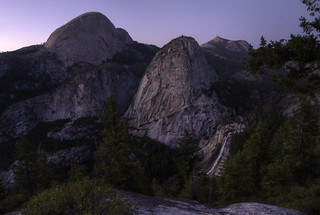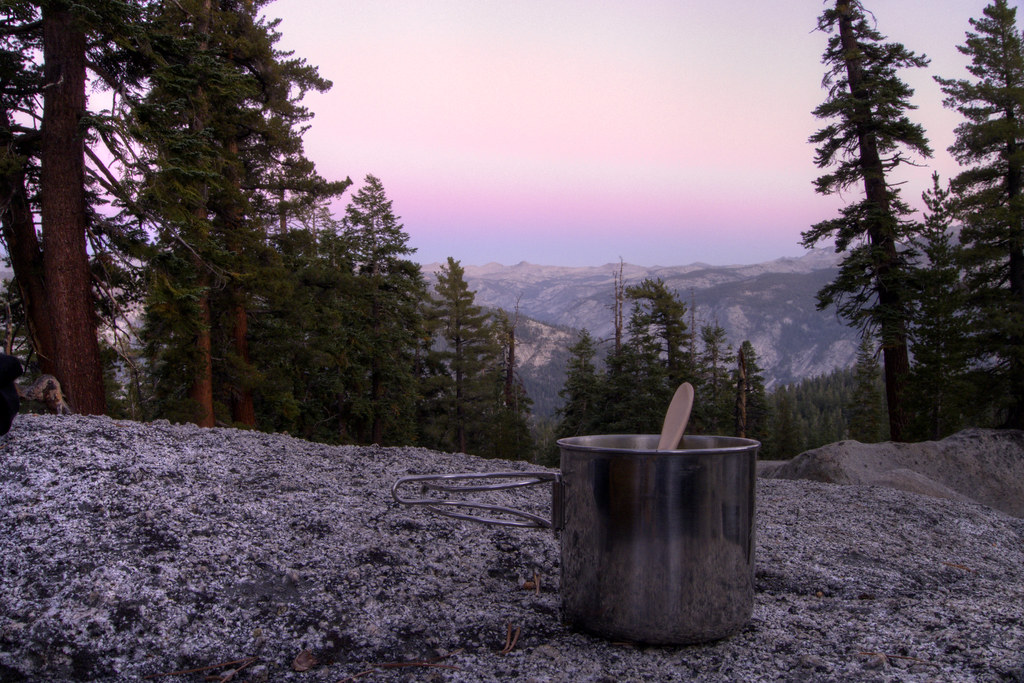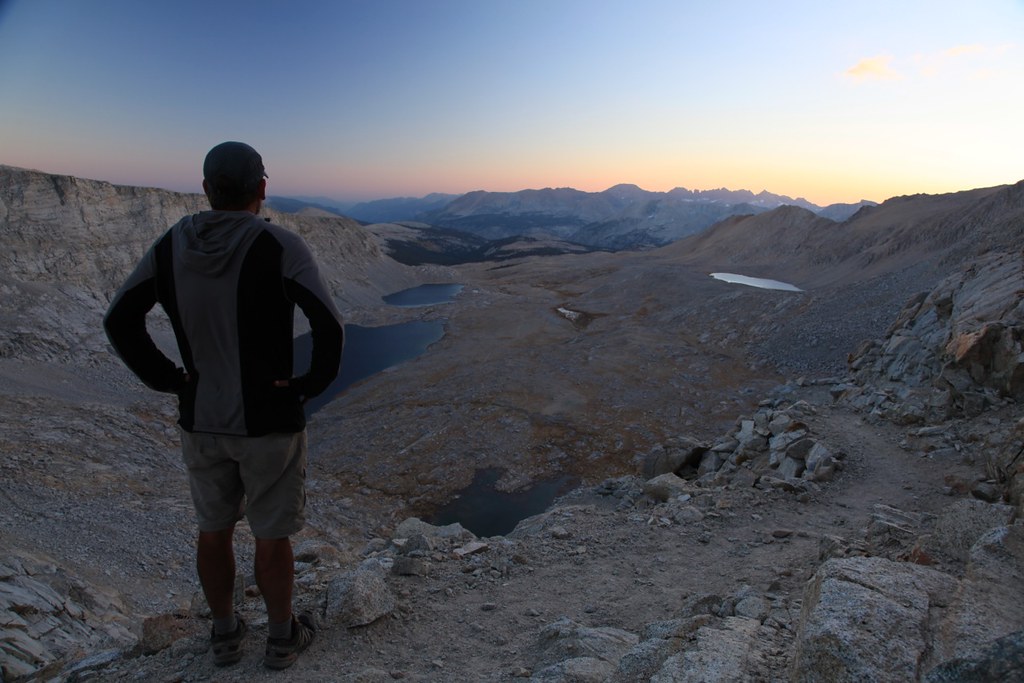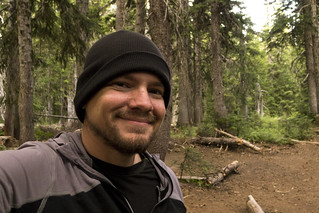Even though Scotland has the world’s most lax trespassing
laws, with private property not even being off limits, a police officer in
Durness didn’t appreciate me setting up my tent behind a soccer pitch along the
northern coast.
“Does this look like a campground to you?” he said in a
stern voice.
“I was under the impression that this was okay in Scotland,”
I said.
I was on the northern edge of town. Much closer to the edge
and I would have fallen into the ocean. Actually, the only people who might see
me were the proprietors of a nearby campground. I wondered if they called the
police. It must be hard to run a campground when wild camping is free and legal.
Even
though I still don’t think I broke any laws, I wasn’t going to argue. I packed
up and left. I wouldn’t have minded as much if he didn’t wait until after
nightfall and I hadn’t been cozy in my sleeping bag.
Rather than move just outside of town, I walked to the dock
in Keoldale a couple miles away. In the morning a boat and minibus would be
taking a few of us across the Kyle of Durness to Cape Wrath, the northernmost
point in Western Scotland and the northern terminus of the Cape Wrath Trail and
Scottish National Trail. I found a place just barely big enough to setup my
tent between the Kyle of Durness and the small parking area next to the dock.
The next morning brought beautiful weather. Every Scot I met who knew my plans made sure I knew that this has been exceptional for Scotland in September. I
hoped it would stay that way for the next few weeks. I have been feeling a lot
of pressure to get out of the Highlands before the weather turns unpleasant.
I packed up and walked to the dock to wait for the ferry. Cape
Wrath is sometimes closed by the Ministry of Defense to use it as a bombardment
range, but a sign posted said there would be no delays today.
It took four
trips on the tiny boat to get the thirty or so people and dogs across. On the other side they packed twelve of us, plus three large dogs and several backpacks into a
12-seater minibus, which then crept up the only road on Cape Wrath.
“They tarred this road in 1955 for the first and last time,”
the driver said as we bumped along at fifteen miles per hour.
 “Will you be able to use this road if you get a Yes vote on
Thursday?” a woman in the back asked, regarding the referendum on Scottish
independence from the United Kingdom.
“Will you be able to use this road if you get a Yes vote on
Thursday?” a woman in the back asked, regarding the referendum on Scottish
independence from the United Kingdom.
“Sure, why not?” he said. “This is a public road.”
“Because you said it was used by the Ministry of Defense,”
she said.
“Well… there is the law and then there is the local law,” he
said, making a few people to chuckle.
The baby on the woman’s lap next to me decided we were going
to be best friends. When I looked at her, I noticed she was smiling at the nothing happening on my face as I stared out the window.
She giggled and said something in baby gibberish that I
didn’t understand. It’s not her fault, I even have a hard time understanding a lot
of the adults in Europe. She kept trying to put the buckles and straps on my backpack into her mouth until her mom said, “It’s okay, I think
her immune system can handle anything.”
“You see this small stream coming up here,” the driver said.
A few days ago a flash flood came through and took out all these fences.” He
pointed at a scattering of wooden fence posts and tangled barbed wire. “The bridge
here a good example of speedy Scottish workmanship,” he said. He slowed down
even more before crossing. “A storm took out the old bridge, so this was setup
as a temporary replacement... in 1981.”
“Then it’s a good example of quality Scottish workmanship,” a man behind me said.
“You all came on a good day, though,” the driver said. “The
weather isn’t always this nice. We often have thick fog and can get gale force winds of a hundred miles
per hour.”
Later we came to a small metal structure used by the military
painted with black and yellow checkerboard pattern.
“That’s a testament to the weather on Cape Wrath,” he said.
“That building is made of solid steel and you can see that it’s still bolted
down to the ground with thick steel cables.
Right before the lighthouse on Cape Wrath would come into
view, a thick fog rolled in. “Ah, give it a half hour, this might clear out of here,” the
driver said.
In addition to the lighthouse, and although remote and subject to harsh unpredictable weather, Cape Wrath is home to a small café called the Ozone Café. I walked inside to
wait out the fog as the driver suggested. A plague on the wall designated the
café as the official end of the 470-mile Scottish National Trail, with the last 221 miles being on the Cape Wrath Trail. For me it would be the beginning.
The man behind the counter was the owner, John. I've read about him in my guidebook. His welcoming
face is the one you see at the end of these long, difficult, and often
dangerous routes, so to many backpackers, the fringe of gray hair around his
balding scalp, the crow’s feet radiating from the corners of his soulful eyes,
and his thin stoic smile are something like the Cathedral of Santiago or the
peak of Mount Katahdin. Although, I hardly think he looks at himself this way. He would
probably prefer to be known as the quiet friendly man who runs the most remote café
in all of Britain.
“I’m doing the Cape Wrath Trail to the West Highland Way,
but I’m thinking about doing this Scottish National Trail now.” I said.
“Well, you’d be the first person to ever do it south,” he
said.
“Oh, really?” I said. “Then I’m doing the Scottish National
Trail.”
“It’s only been an official trail for two years, so only 27
people have even completed it,” he said.
I don’t know that I’ve ever been the first to do anything,
so I had a new excitement for the trail. This additional excitement would only
last two days, however, when I was later told by a shop owner who met two backpackers
attempting a southbound hike earlier this year.
 “Maybe they didn’t finish,” I thought. “And even if they did
I’m sure they didn’t continue going south to the English Channel. Or begin
their journey after a 700-mile trip across Ireland and Northern Ireland.”
“Maybe they didn’t finish,” I thought. “And even if they did
I’m sure they didn’t continue going south to the English Channel. Or begin
their journey after a 700-mile trip across Ireland and Northern Ireland.”
I ate my bowl of soup, plus a complementary refill John
offered after I finished. By then the fog had cleared. I walked past the
lighthouse to the edge of a cliff overlooking a deep blue ocean. That was as
far north as I could safely go in Western Scotland, so I turned and started
walking to the English Channel.


com-s.jpg)
com-s.jpg)
com-s.jpg)
com-s.jpg)










